How to train an Olde English Bulldogg post may contain affiliate links. Learn more on my Affiliate Disclosure page.
Although the Olde English Bulldogg breed is friendly, loyal, energetic, docile, and devoted to its family, obedience training is essential if you consider rescuing or purchasing this unique breed.
The Olde English Bulldogg breed's history may include aggressive tendencies. Therefore, early proper puppy training is essential to avoid aggressive tendencies.
Discover How To Train An Olde English Bulldogg
Olde English Bulldogg Evolution
During the early 19th century, a blood sport called 'bull-baiting.' It involved aggressive dogs in combat against bulls. However, a famous athetotic dog named Olde English Bulldogg appeared more courageous than most other dogs when pitted against bulls.
Historians believed the Olde English Bulldoggs were the precursors to modern bulldogs after protesters disbanded in the early 1830s.
It was powerful, muscular, agile, and aggressive. But unfortunately, these athletic bulldogs began disappearing once bull-baiting was banned.
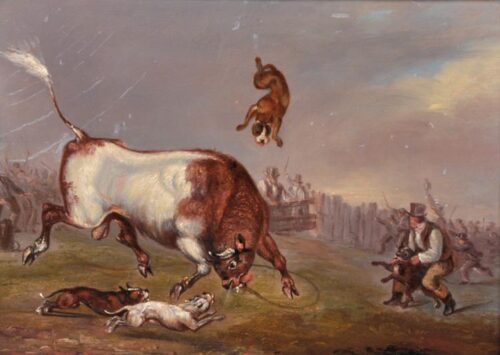
An Olde English Bulldogg is a more active and healthy variation of the original dog from the 17th century.
The breed combines the English Bulldog, Mastiff, American Pit Bull Terrier, and the American Bulldog. With these breeds, dog breeders systematically developed the desired characteristics and temperaments.
The new breed resulted in an athletic dog (similar to the English Bulldog) with a happy disposition.
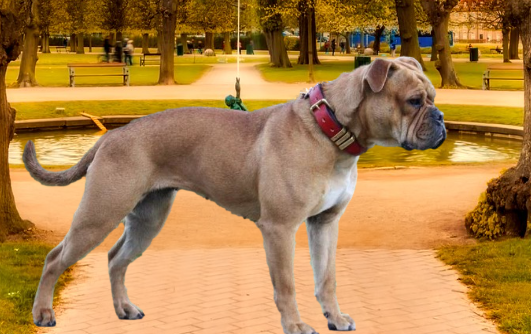
Nowadays, bulldogs are bred exclusively for companionship, which explains their diminutive size and lack of athleticism.
How To Train An Olde English Bulldogg Characteristics

Olde English Bulldoggs are heavy dogs in terms of size. Although not particularly large or tall, these dogs are pretty agile on their somewhat short legs despite their weight.
Olde English Bulldoggs can grow much more significantly than average if appropriately bred.
What do you need to know about Olde English Bulldoggs if you have one or are contemplating getting one? Read on to learn more.
Olde English Bulldogg Breeding
New breeders of the Olde English Bulldogg eliminated health problems between 1970 and 1980. Using modern breeding techniques, dogs are more prominent, healthier, and have a taller physique and a reduced bully instinct.
The original Olde English Bulldogg had significant breathing issues. By realigning their nostrils, breeders have eliminated this breathing problem. Overheating has also been improved and is no longer a serious problem.
This new breed is more lively, playful, and energetic than the English Bulldog.
This new breed can naturally reproduce. Contrary, unlike the English Bulldogs, birth is often by cesarean section.
Although due to its cross-breeding with regular English Bulldogs just a few decades ago. The Olde English Bulldogge seems to be a healthier breed than most other bulldog breeds, but it doesn't mean that Olde English Bulldogge health problems don't exist.
Common Health Issues
- Overweight
- Olde English Bulldogg eye problems - Entropion
- Skin disorders
- Dental diseases
- Thyroid issues
- Torn knee ligaments
- Olde English Bulldogg skin allergies
- Hip Dysplasia
- Heart ailments
- Patellar luxation
- Laryngeal Paralysis
- Eating items other than food
Annual vet expenses can exceed $5,000. Bloat is the most common health concern. You can avoid this by feeding your Olde English Bulldogg small amounts of food as often as possible during the day.
How To Train An Olde English Bulldogg Pros and Cons
Pros
- Strong, big-boned, and muscular
- The current breed is healthier, nimble, and agile
- Maintenance is easier with a short coat
- Adaptable: quickly adjusts to new environments
- An incredibly social and friendly family dog
Cons
- Territorial in nature
- Quite needy for attention
- Frequently drooling
- Astonishingly gassy
- Inability to tolerate heat
- tendency to chew on things
- Legendary stubbornness
- Possibly aggressive around other, larger dogs
How To Train An Olde English Bulldogg
How to train an Olde English Bulldogg is really not hard because they are brilliantly trainable, and they can do tricks. However, their stubbornness and strength of mind make teaching them commands challenging. Nevertheless training them is a must; therefore, time spent on training sessions must be regular, consistent, and always short.
You can train your Olde English Bulldogg at home. Especially, If you cannot afford professional training due to its being too expensive, time-consuming, or there being no nearby facilities. Then consider researching the internet for an online dog training program that fits your needs.
How To Train An Olde English Bulldogg Using Positive Reinforcement
Positive reinforcement works best when training an Olde English Bulldogg. Therefore, throughout this article, "train" or "training" will automatically refer to the positive reinforcement method.
What is Positive Reinforcement?
Your dog receives treats, affection, and playthings as soon as he obeys your behavior command correctly.
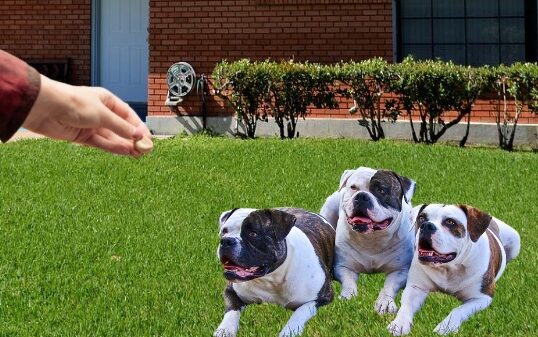
How To Train An Olde English Bulldogg Basic Obedience Commands
Parents of Olde English Bulldoggs should train their dogs to obey the following obedience commands:
SIT ~ DOWN ~ STAY ~ COME ~ HEEL ~ STOP JUMPING ~ LEAVE IT
Your dog will behave better if you both understand the basic commands. Once learned, the results will be your dog will pay attention to you and obey your commands.
DIY dog trainers, especially first-timers, should always teach the command Sit first since it is the most simple behavior.
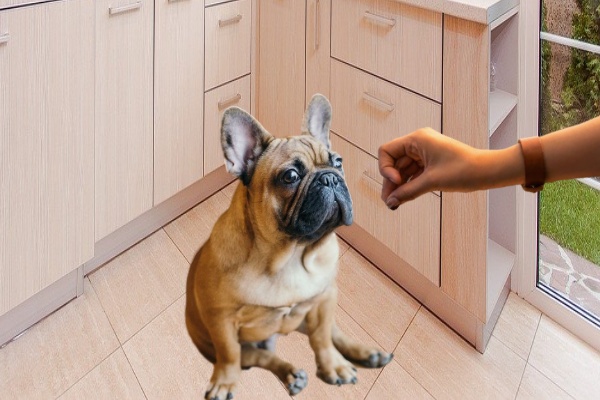
SIT - The first command you should teach your Olde English Bulldogg is "Sit." By doing so, other obedient commands will be easier to accomplish.
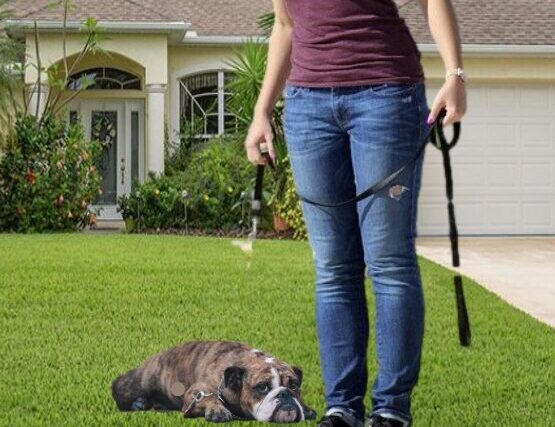
DOWN or LAY DOWN - Controls and calms your Olde English Bulldogg.
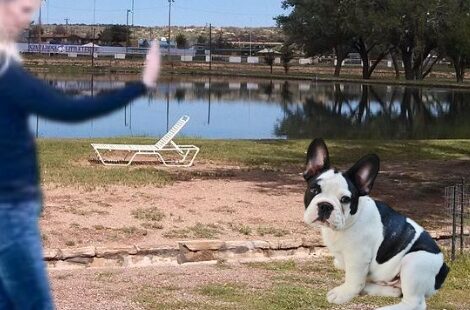
Stay - it keeps your dog safe and prevents mischief from happening.
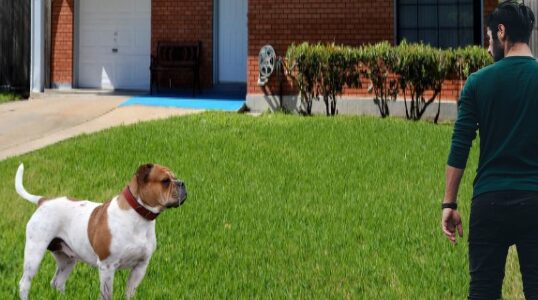
Come - Prevent your dog from mischief off-leash.
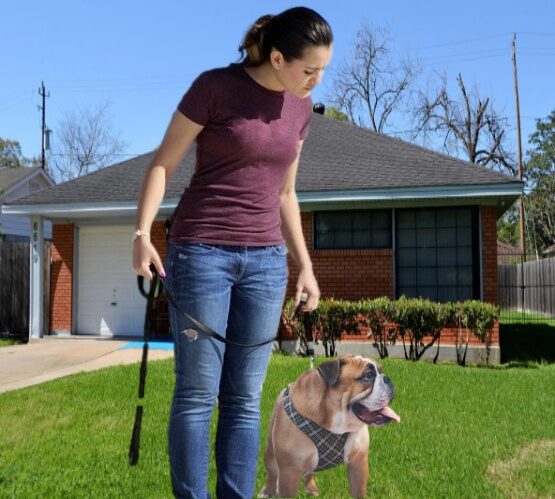
Heel - Walking your dog calmly at your side is essential, especially in crowded areas.
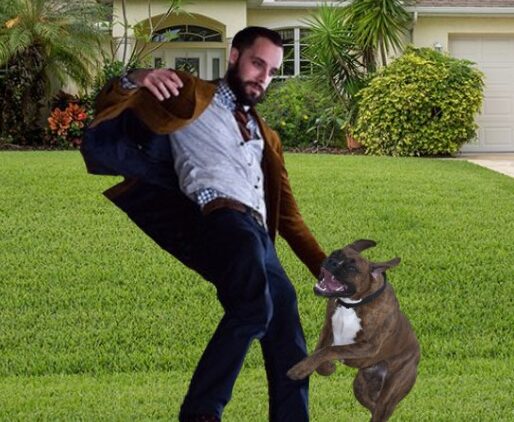
STOP JUMPING - Ensure your dog does not jump on people or climb furniture.
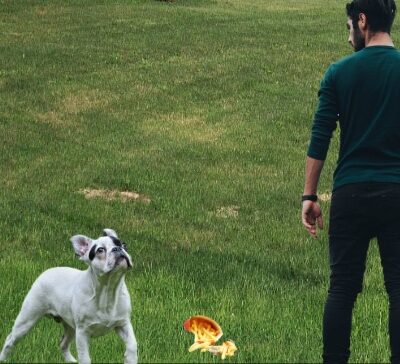
Leave it - Teach your dog to avoid harmful objects or food items.
How To Train An Olde English Bulldogg Do's and Don'ts
Do's
- Praise and Reward - Provide praise and rewards as soon as your Olde English Bulldogg displays the correct behavior.
- Training Place - A quiet environment is ideal for training sessions to prevent distractions.
- Training Sessions - Should not exceed 15 minutes.
- Training Exercises - Always be consistent and use the exact words for a particular Behavior, ensuring that family members understand and say the actual words.
- Gradually Remove Treats - Replace treats with praise after your Olde English Bulldogg learns and performs the behavior successfully.
- Exercise - This breed requires moderate supervised long daily walks several times a day, plus planned playtime.
Don’ts
- Correct Unwanted Behavior - Positive reinforcement training often leads to the mistaken belief that it is hard to stop unwanted behavior by merely saying "NO." to your puppy. The key to eliminating unwanted behaviors in Olde English Bulldoggs is early training.
- Punish - Using physical punishment, scolding, or displaying a disgusting attitude toward your puppy will prolong your training time.
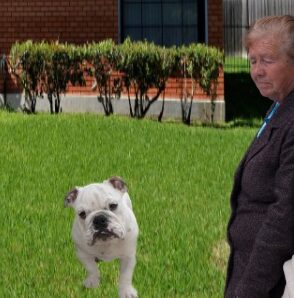
- Rewarding Undesirable Behavior - When your dog hears neighborhood kids playing in front of your house, he barks constantly. So that your dog will stop barking, you open the house door and let him out.
Your dog's barking should not be an excuse to let him out. It is your dog who controls the situation, not you. Therefore your Olde English Bulldogg gets rewarded for bad behavior.
Stopping your dog from barking while the kids play outside would be ideal. However, do not allow Olde English Bulldogg to run out and ignore his barking. The barking will eventually stop.
Socialize Training
You can't just let your Olde English Bulldogg puppy run free in a dog park if you want him to be socialized.
Inherent aggression is the leading cause of fear and suspicion among Olde English Bulldoggs. It's, therefore, essential to building positive relationships with other people and puppies to train your dog. When a situation appears hostile, move on.
Introduce them gradually to various situations as soon as possible and often. Below are example situations:
- People
- Dogs and different animals
- Various locations
- Situations of different types
- Make them aware of a variety of possible frightening sounds
- Household activities and appliances made sounds
- “Day-to-day dog life” routines such as baths and alone time
Prolonged exposure to a particular harmful condition can lead to an unsocialized Olde English Bulldogg who might be aggressive or difficult to control.
The skills you teach your puppy will help him understand acceptable behavior in any situation.
How To Train An Olde English Bulldogg to Use a Crate
Crate training is an important part of any dog’s life, and Olde English Bulldoggs are no exception. Crate training your pup can help them feel safe and secure and help with housebreaking and other behaviors. Here are some tips for training your Olde English Bulldogg to use a crate.
Introduce Your Dog to the Crate
The first step in crate training your Olde English Bulldogg is to familiarize them with the crate. Put the crate in a comfortable and inviting area for your pup, and let them explore it on their own. Put toys and treats inside the crate, and let them investigate it at their own pace.
A toy or treat helps them become comfortable with the crate, making the training process easier.
Establish a Routine
Once your Olde English Bulldogg is comfortable with the crate, it’s time to establish a routine. Put their meals in the crate, and allow them to eat inside it. Dog food will help them associate the crate with positive experiences.
You can also start putting them in the crate for short periods and gradually increase the amount of time they spend in the crate.
Reward Good Behavior
When your Olde English Bulldogg is in the crate, reward them for good behavior. Give them treats or toys when they enter the crate or stay there for some time. Treats will help reinforce the desired behavior and make the training more manageable.
Are you looking for a way to keep your Olde English Bulldogg entertained? Check out Dog Toys for Aggressive Chewers! These toys are perfect for large dogs who love to chew. Plus, they are real bacon flavored, so your pup won't be able to resist!
With these Dog Chew Toys, you can easily train your Olde English Bulldogg while providing them with hours of entertainment.
Give them treats and toys while they’re in the crate, and make sure to praise them for good behavior.
Be Consistent
Finally, it’s important to be consistent with your Olde English Bulldogg’s crate training. Ensure that you put them in the crate at the exact times every day and reward them for good behavior.
Be Patient
Crate training can take time, so it’s essential to be patient with your pup. If your Olde English Bulldogg is having trouble adjusting to the crate, take a step back and try to make the process more enjoyable for them.
Olde English Bulldogg Potty Training
How to train an Olde English Bulldogg to potty outside can be a daunting task, but it doesn’t have to be! You can have your pup potty trained quickly with a little patience and consistency. Here are some tips to help you get started.
Create a Schedule
- The first step in potty training your Olde English Bulldogg is to create a schedule. Set aside time each day to take your pup outside so they can use the restroom.
- Establishing a routine will help them understand when to do business outside. It’s essential to be consistent so your pup can learn the routine quickly.
Reward Good Behavior
- When your pup does their business outside, it’s essential to reward them for good behavior.
- A reward will help reinforce the idea that going outside is the right thing to do. You can use treats, verbal praise, or a combination of both.
Clean Up Potty Accidents
- Potty accidents are bound to happen while potty training your Olde English Bulldogg.
- If your pup has an accident in the house, cleaning it up right away is essential.
- Dog parents should always use a good enzymatic cleaner to remove any odors that might attract their puppy to the same spot in the future.
Be Patient - Potty training takes time and patience. It’s not something that will happen overnight.
- Be patient with your pup and understand that they’re still learning. With consistency and positive reinforcement, you can quickly potty train your Olde English Bulldogg.
Supervise Your Pup - The last tip for potty training your Olde English Bulldogg is to supervise constantly will help you catch any accidents before they happen.
- And reinforce the idea that going outside is the right thing to do. It’s also important to watch your pup in case they start to go into the house.
Potty training an Olde English Bulldogg doesn’t have to be daunting. You can potty train your puppy successfully with patience and consistency. Creating a schedule, rewarding good behavior, cleaning up accidents, being patient, and supervising your pup are all important steps.
K9 Training Institute Free Workshop
The K9 Training Institute offers a free workshop where you can learn firsthand their effective training methods.
The Free Workshop emphasizes building a solid bond between you and your pup. They explain how to apply positive reinforcement techniques that make learning enjoyable for dogs and their owners.
Does your dog tug on its leash, bark constantly, and won't come when called? Sign Up and get the FREE Obedience Training Workshop Now!





